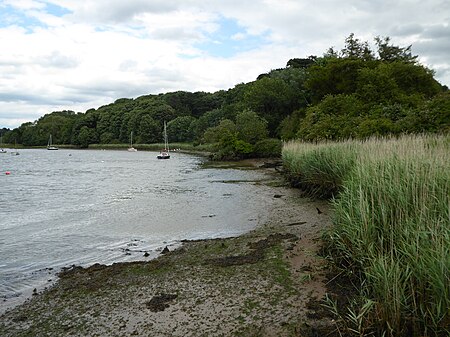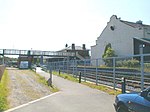Sutton Hoo is the site of two Anglo-Saxon cemeteries dating from the 6th to 7th centuries near Woodbridge, Suffolk, England. Archaeologists have been excavating the area since 1938, when a previously undisturbed ship burial containing a wealth of Anglo-Saxon artefacts was discovered. The site is important in establishing the history of the Anglo-Saxon kingdom of East Anglia as well as illuminating the Anglo-Saxons during a period which lacks historical documentation.
The site was first excavated by Basil Brown, a self-taught archaeologist, under the auspices of the landowner Edith Pretty, but when its importance became apparent, national experts took over. The artefacts the archaeologists found in the burial chamber include a suite of metalwork dress fittings in gold and gems, a ceremonial helmet, a shield and sword, a lyre, and silver plate from the Byzantine Empire. The ship burial has prompted comparisons with the world of Beowulf. The Old English poem is partly set in Götaland in southern Sweden, which has archaeological parallels to some of the Sutton Hoo finds. Scholars believe Rædwald, king of the East Angles, is the most likely person to have been buried in the ship.
During the 1960s and 1980s, the wider area was explored by archaeologists and other individual burials were revealed. Another burial ground is situated on a second hill-spur about 500 metres (1,600 ft) upstream of the first. It was discovered and partially explored in 2000 during preliminary work for the construction of a new tourist visitor centre. The tops of the mounds had been obliterated by agricultural activity. The cemeteries are located close to the River Deben estuary and other archaeological sites. They appear as a group of approximately 20 earthen mounds that rise slightly above the horizon of the hill-spur when viewed from the opposite bank. The visitor centre contains original artefacts, replicas of finds and a reconstruction of the ship burial chamber. The site is in the care of the National Trust; most of these objects are now held by the British Museum.











